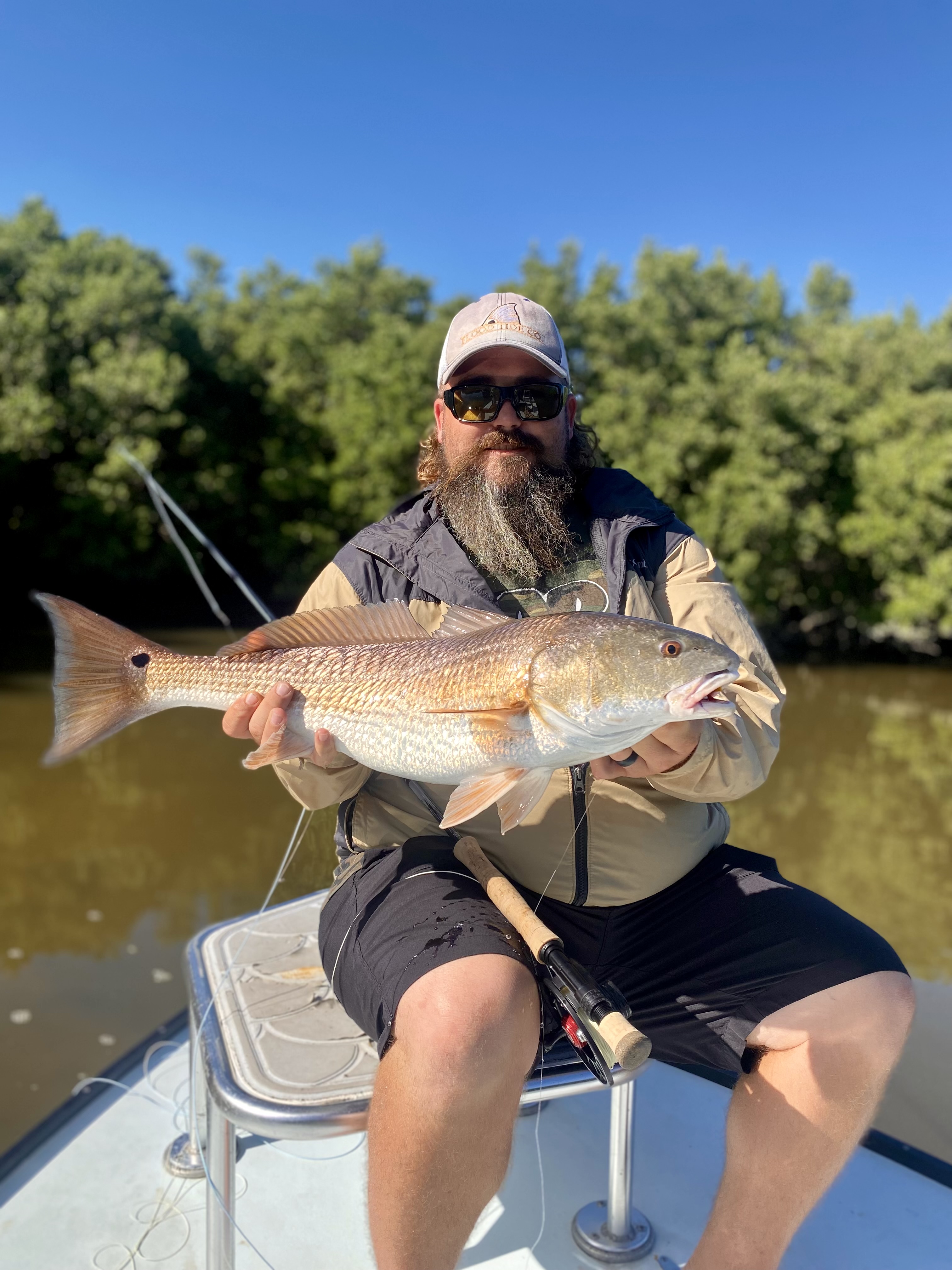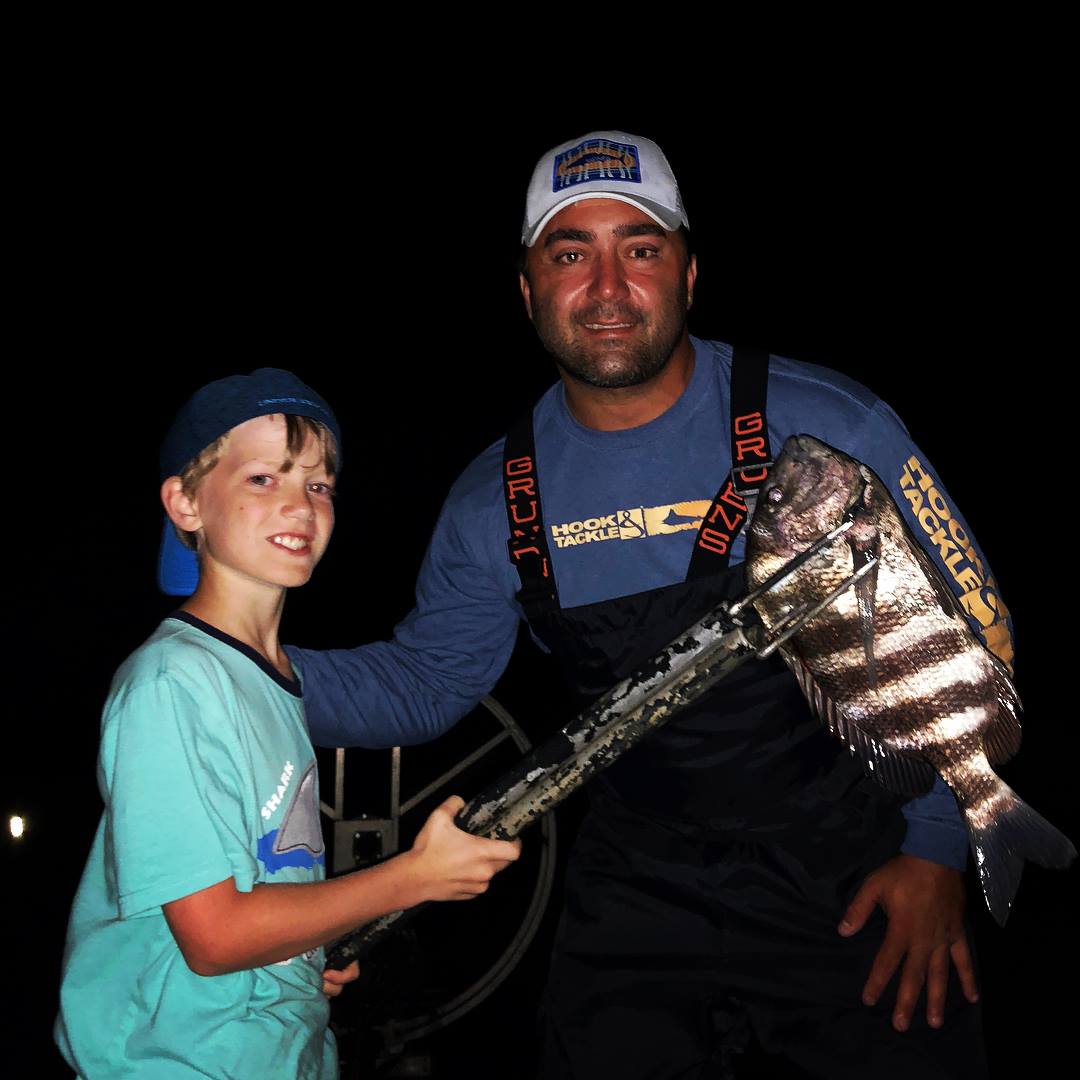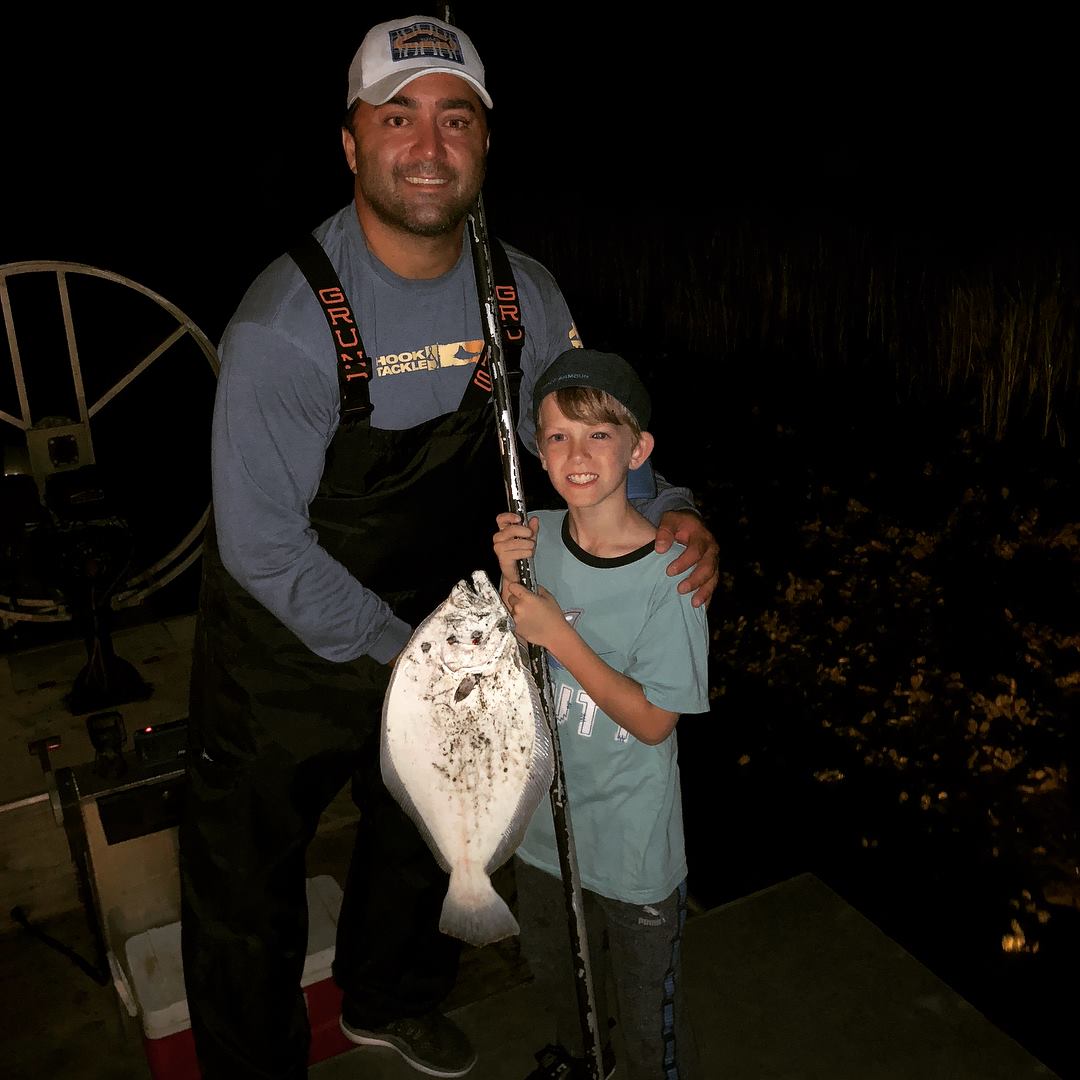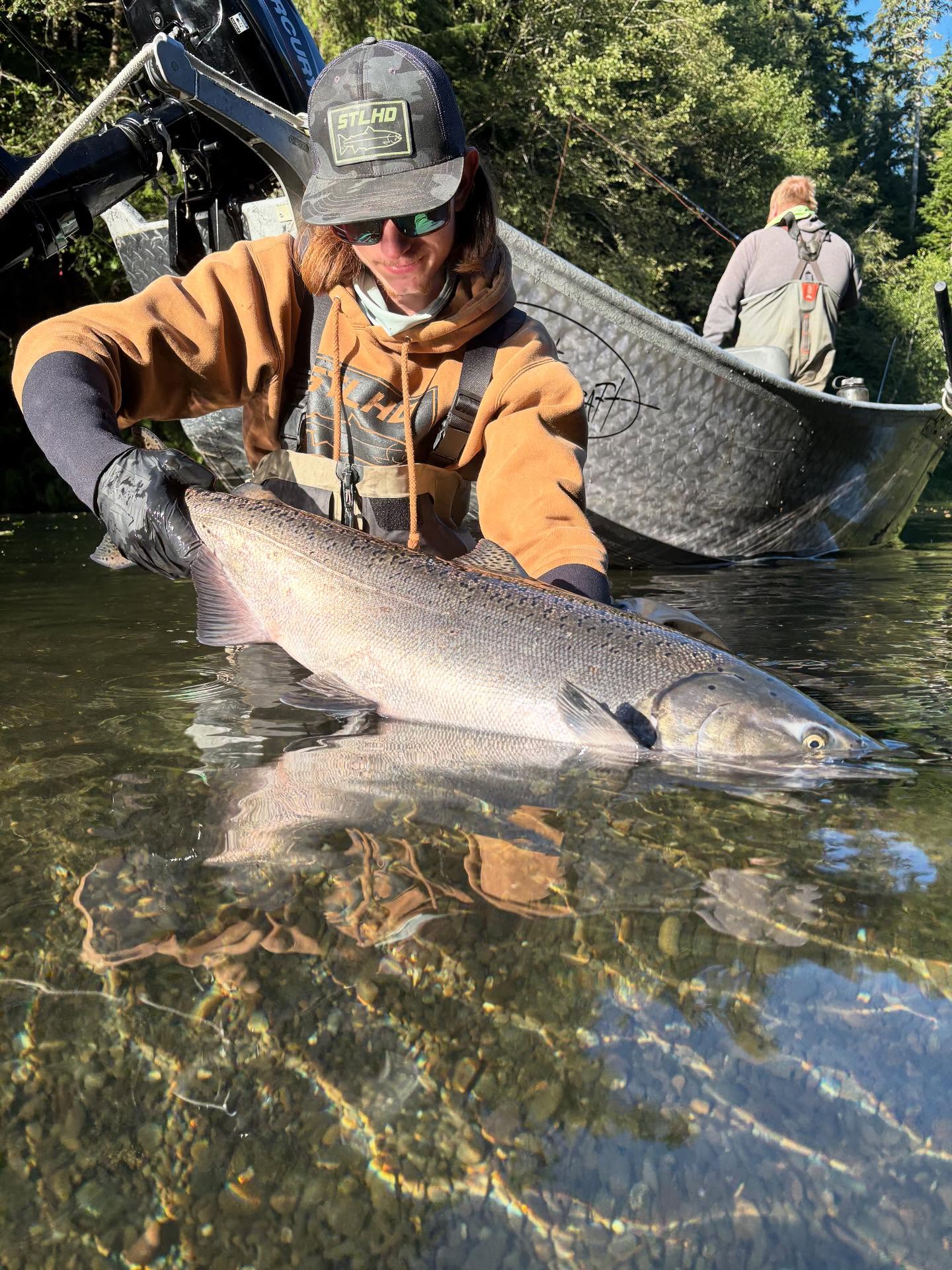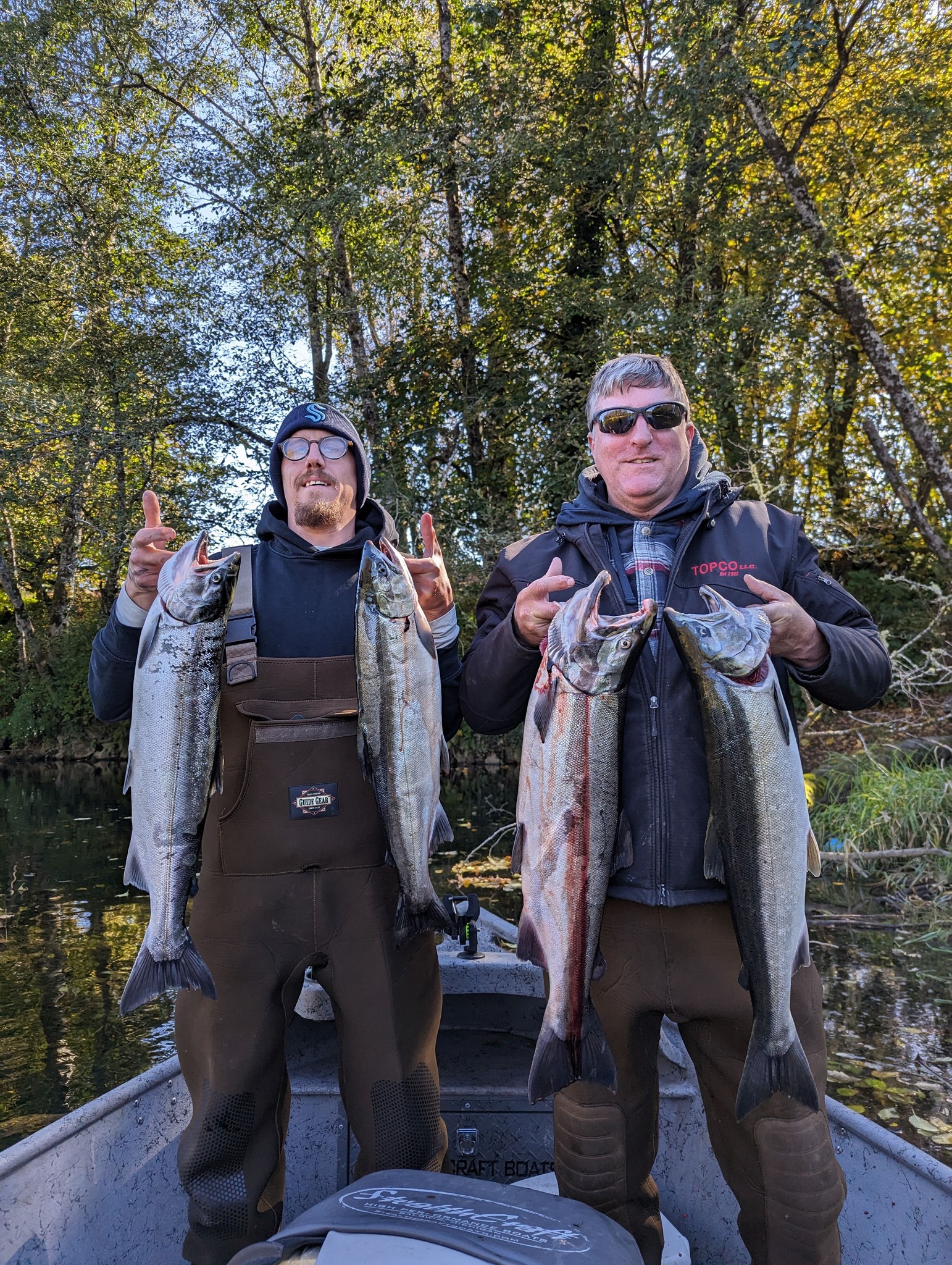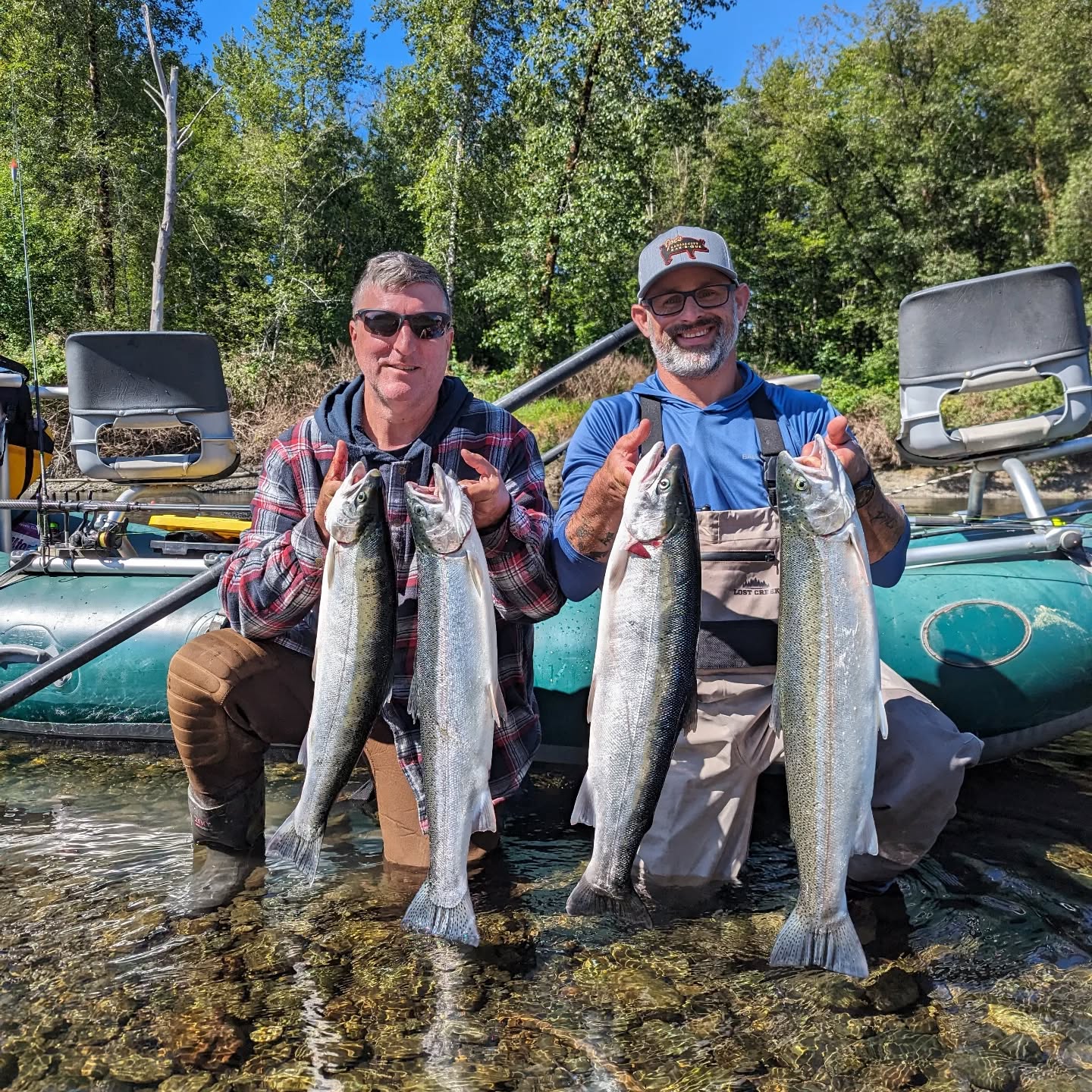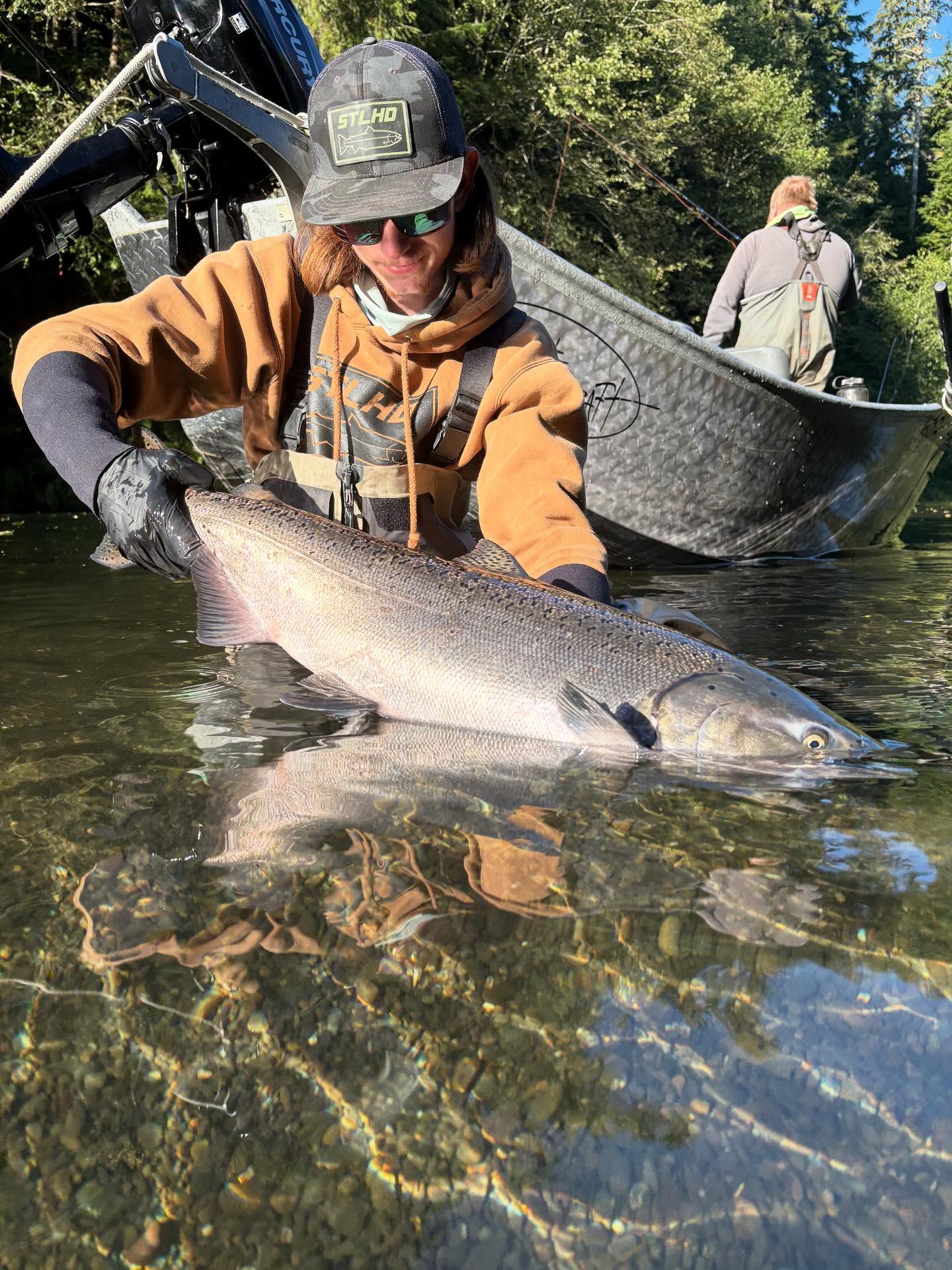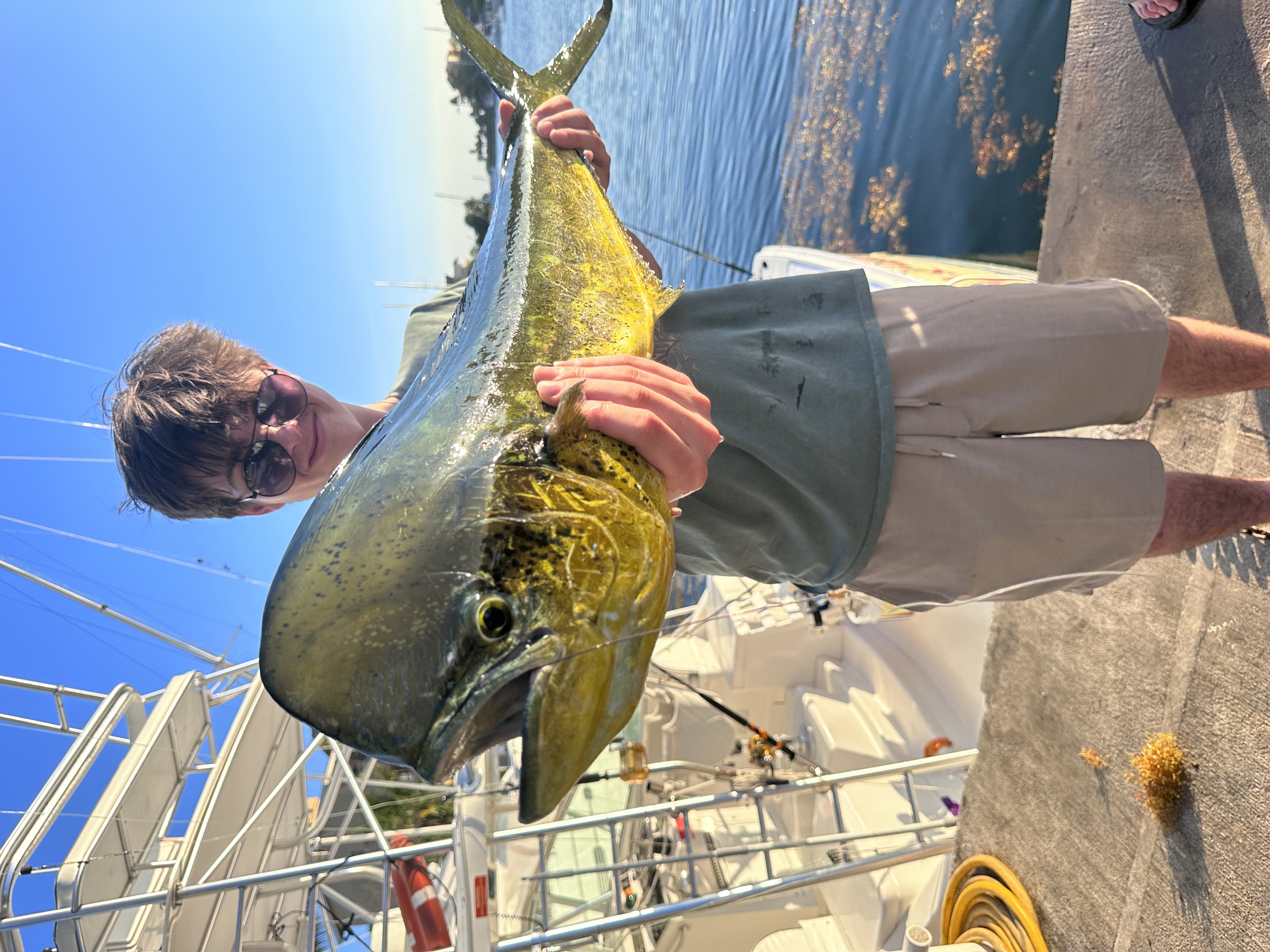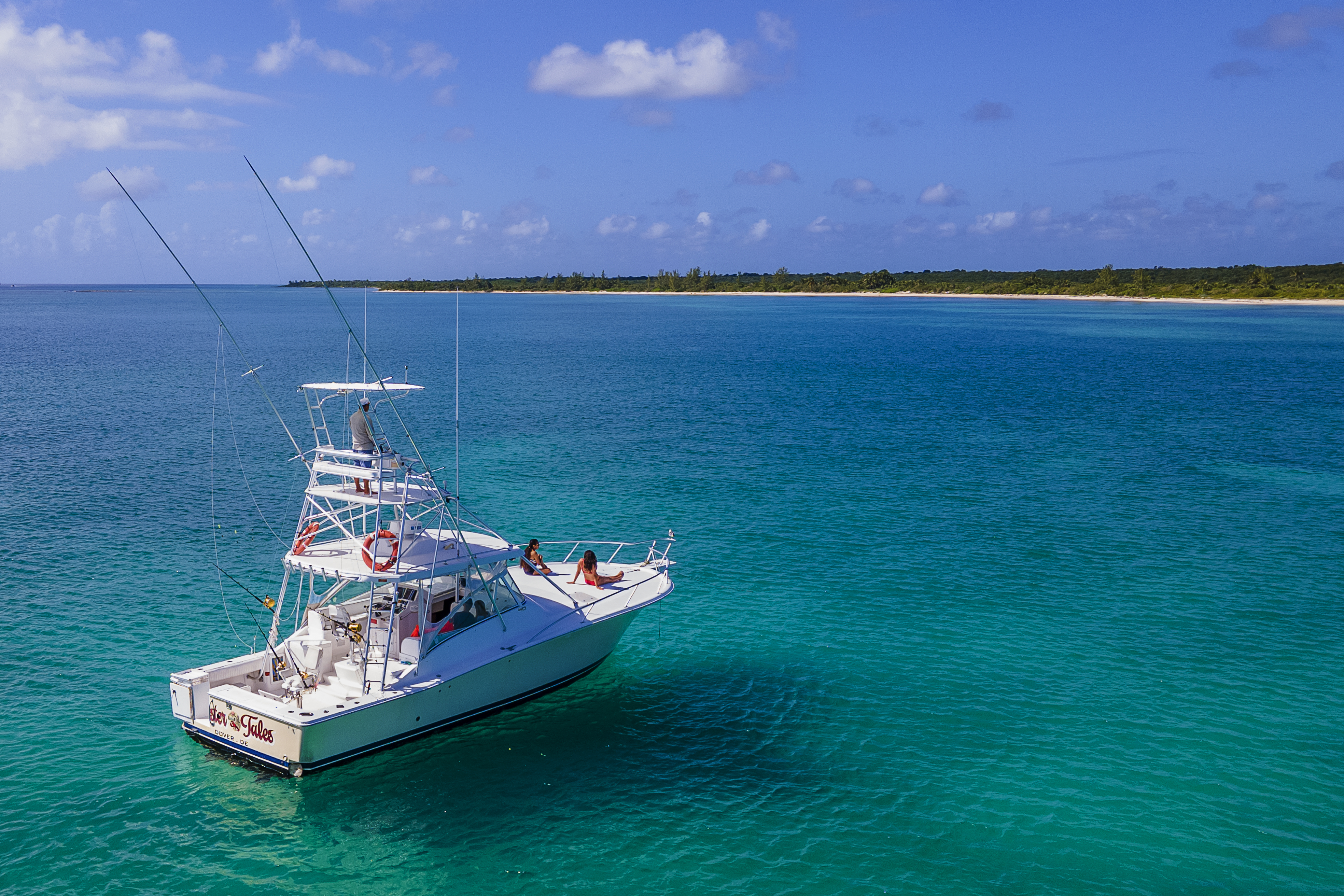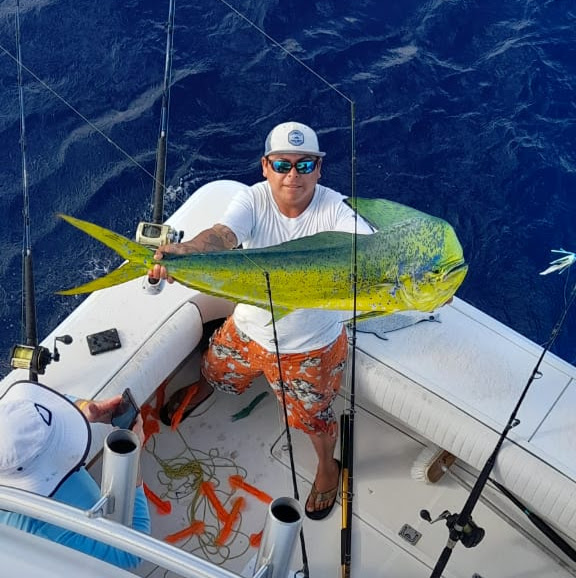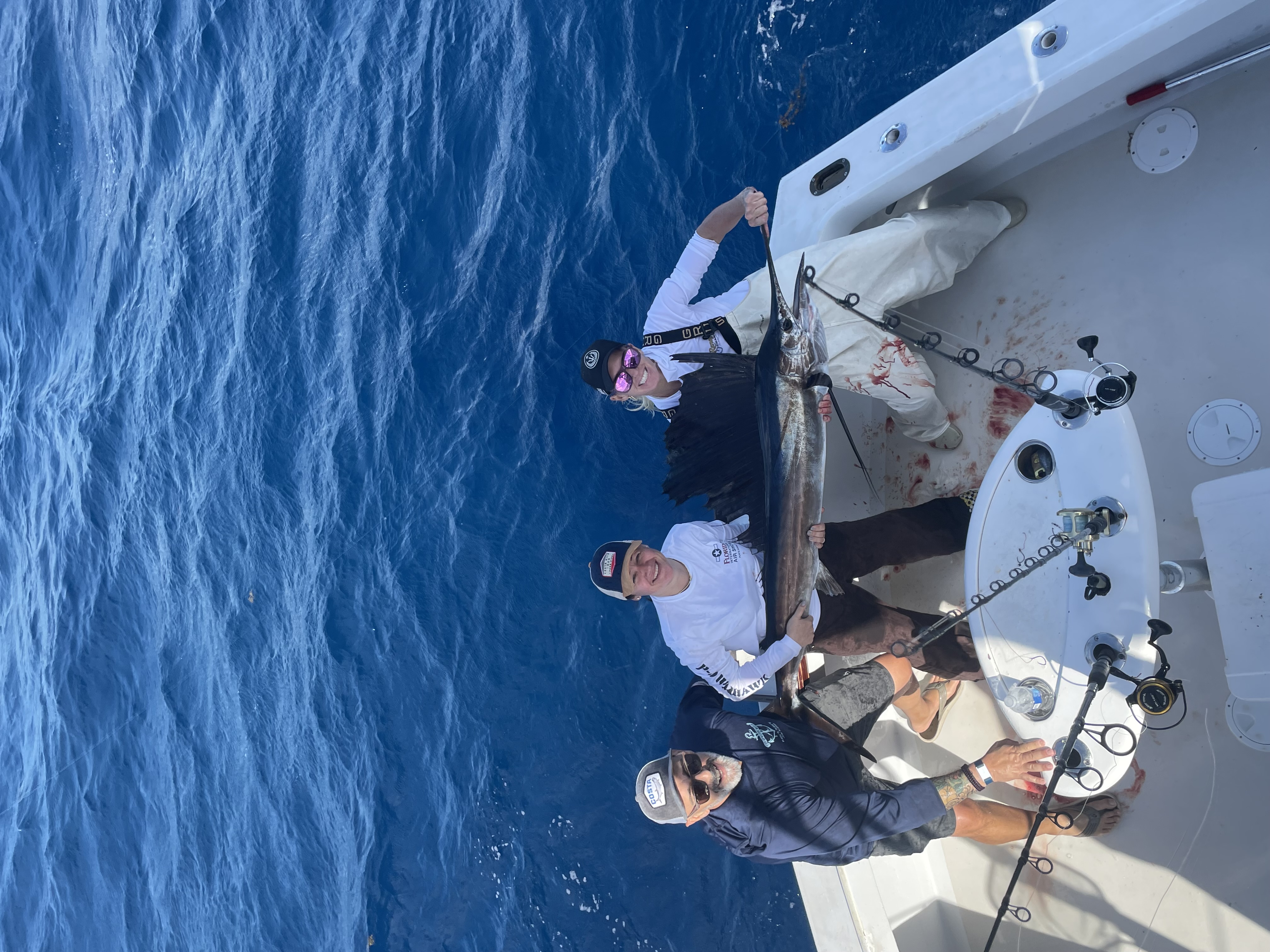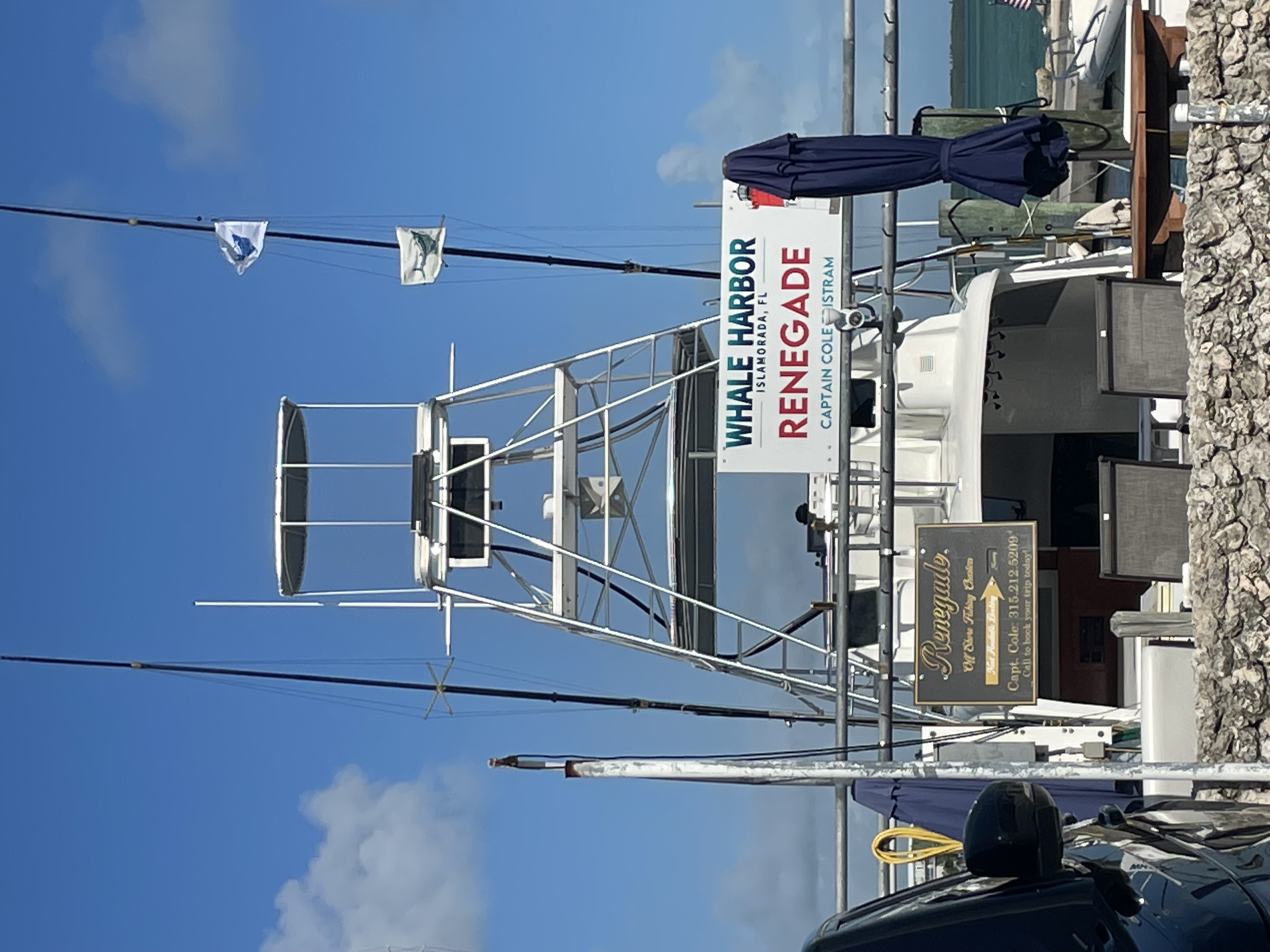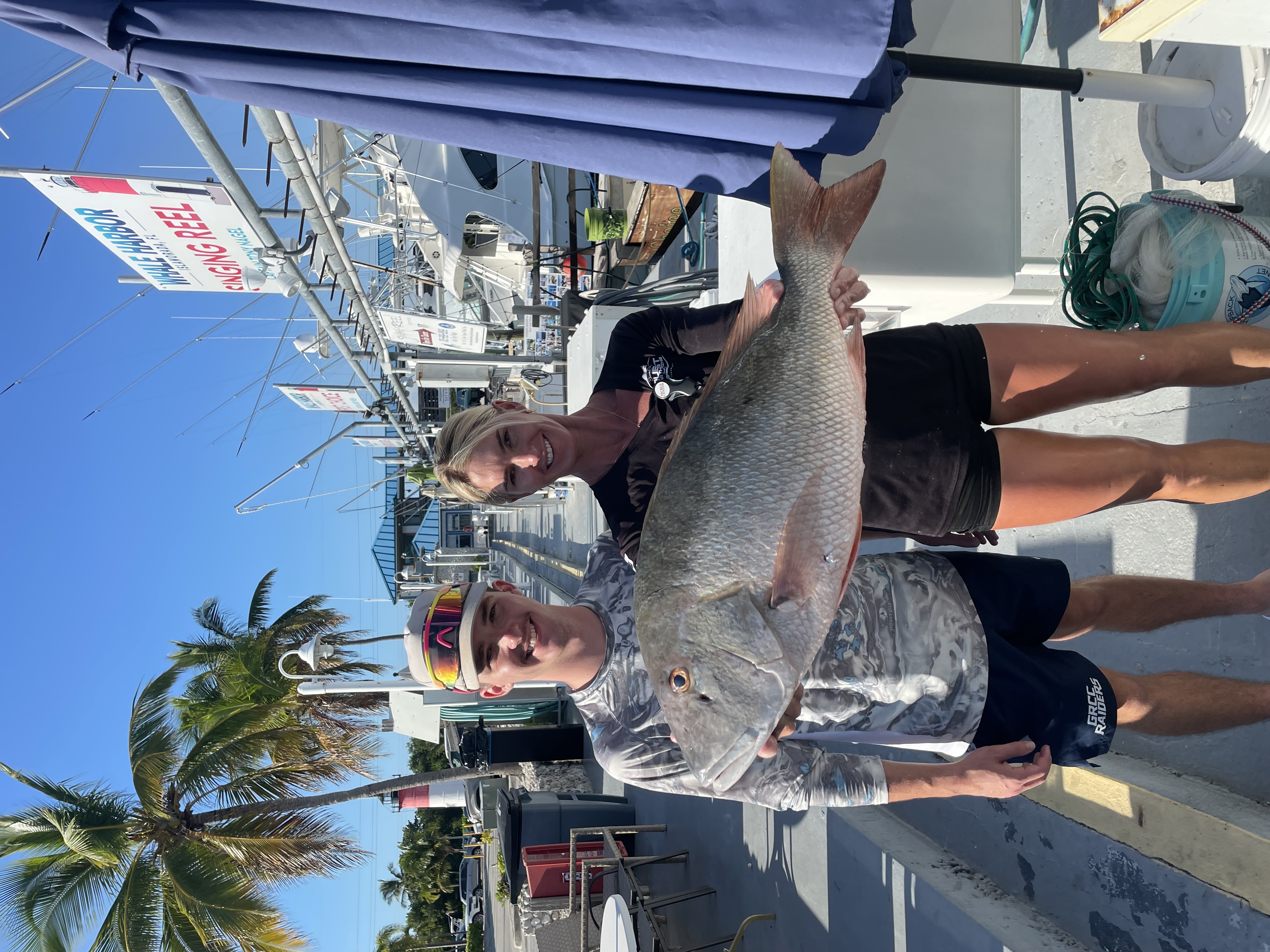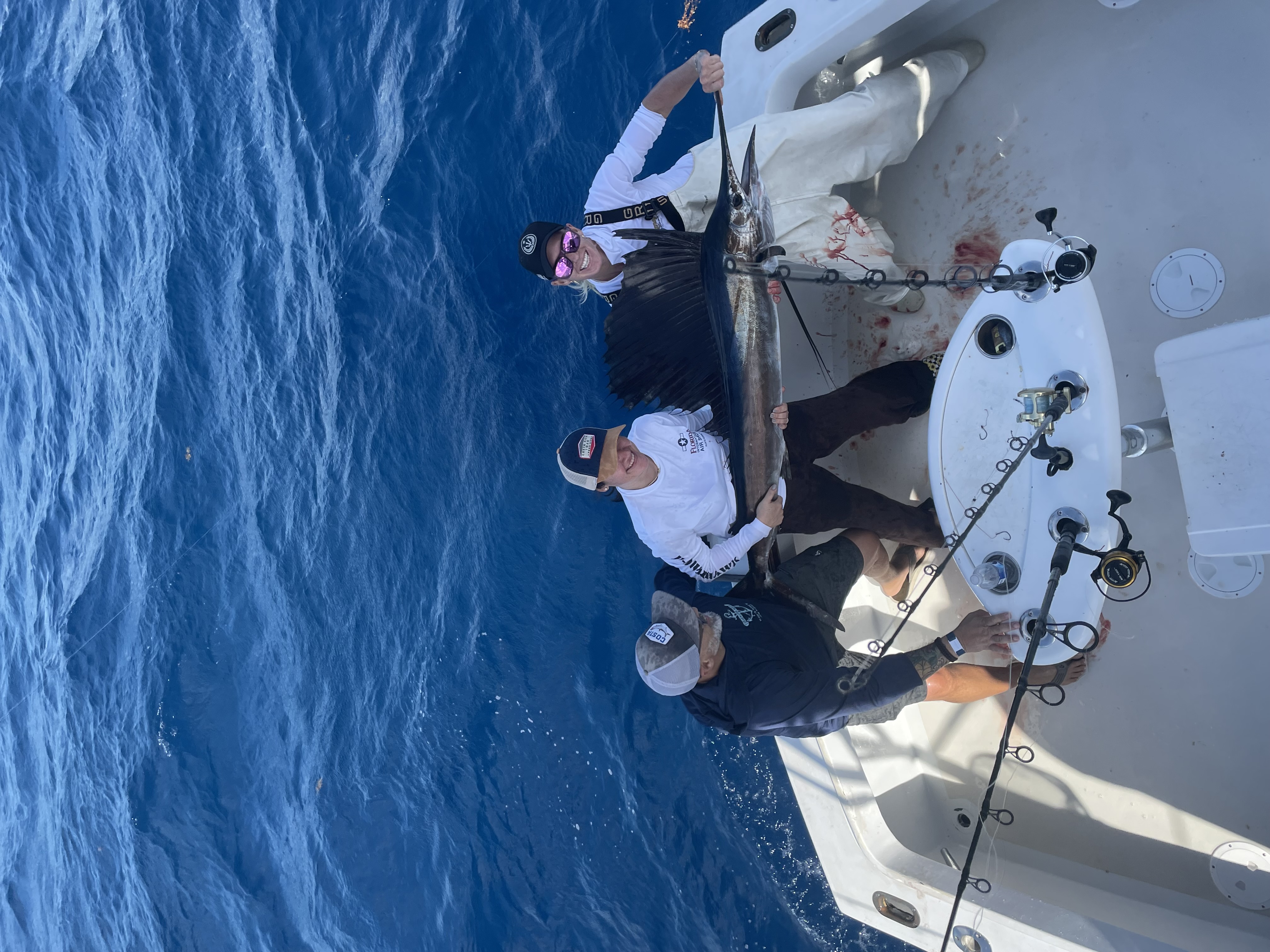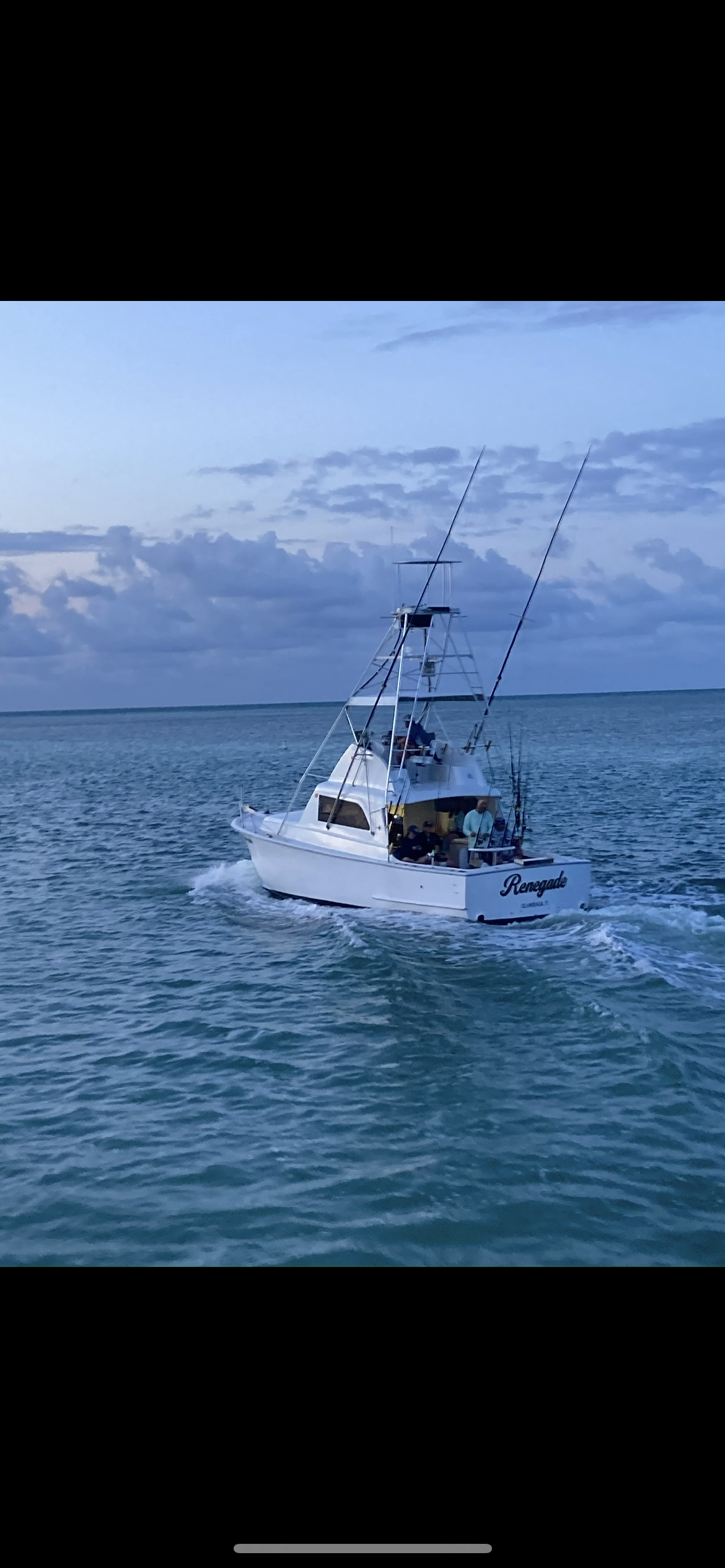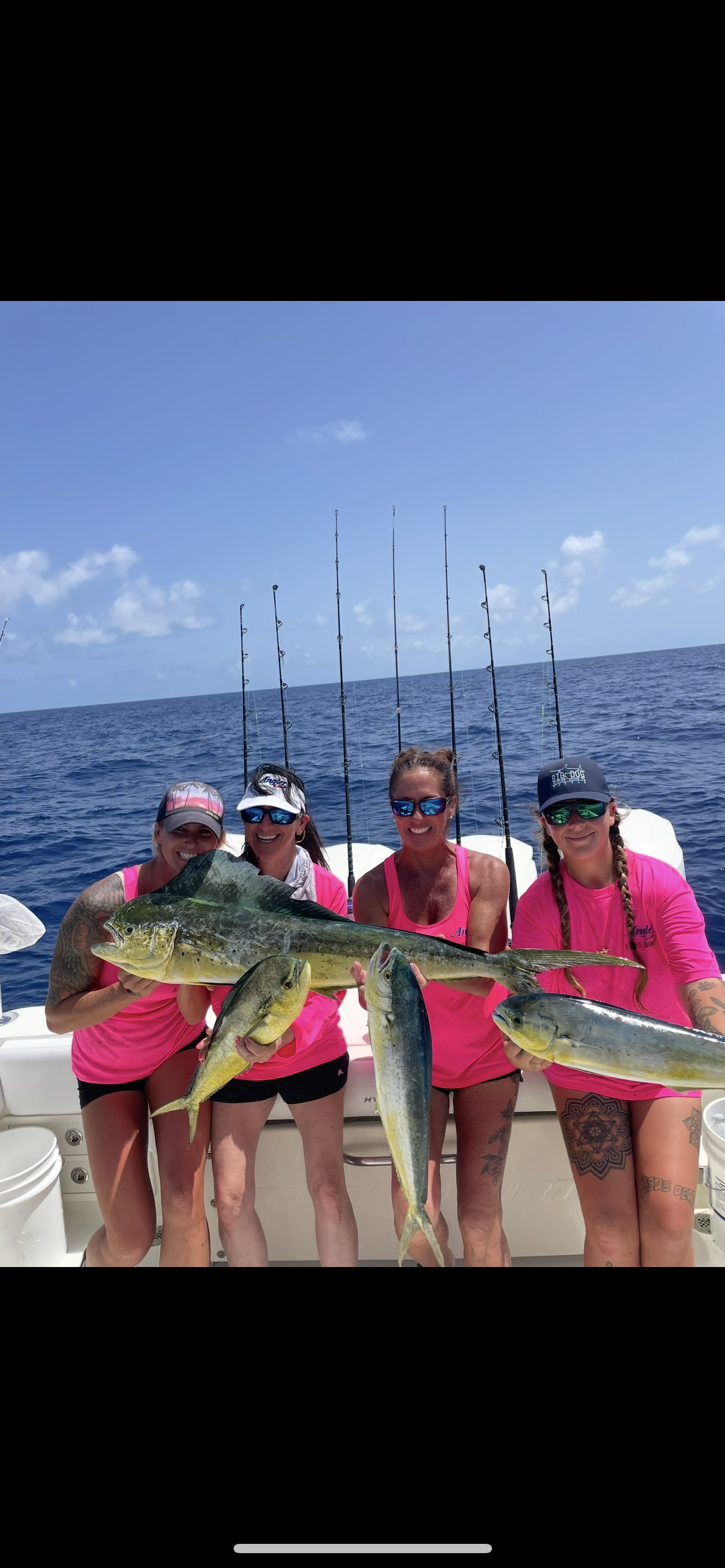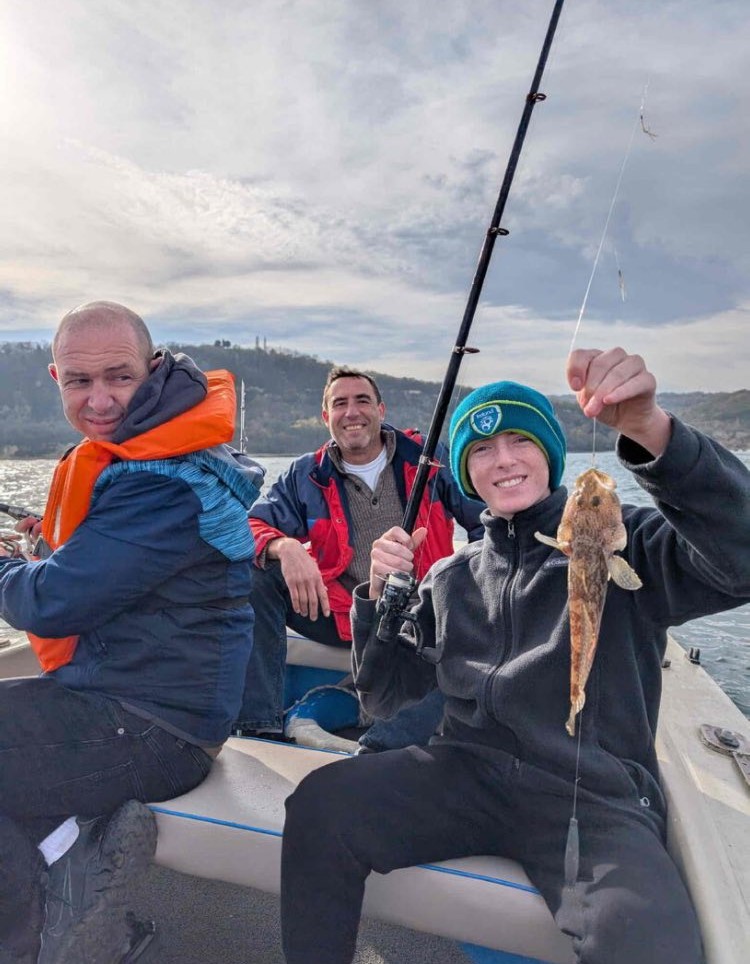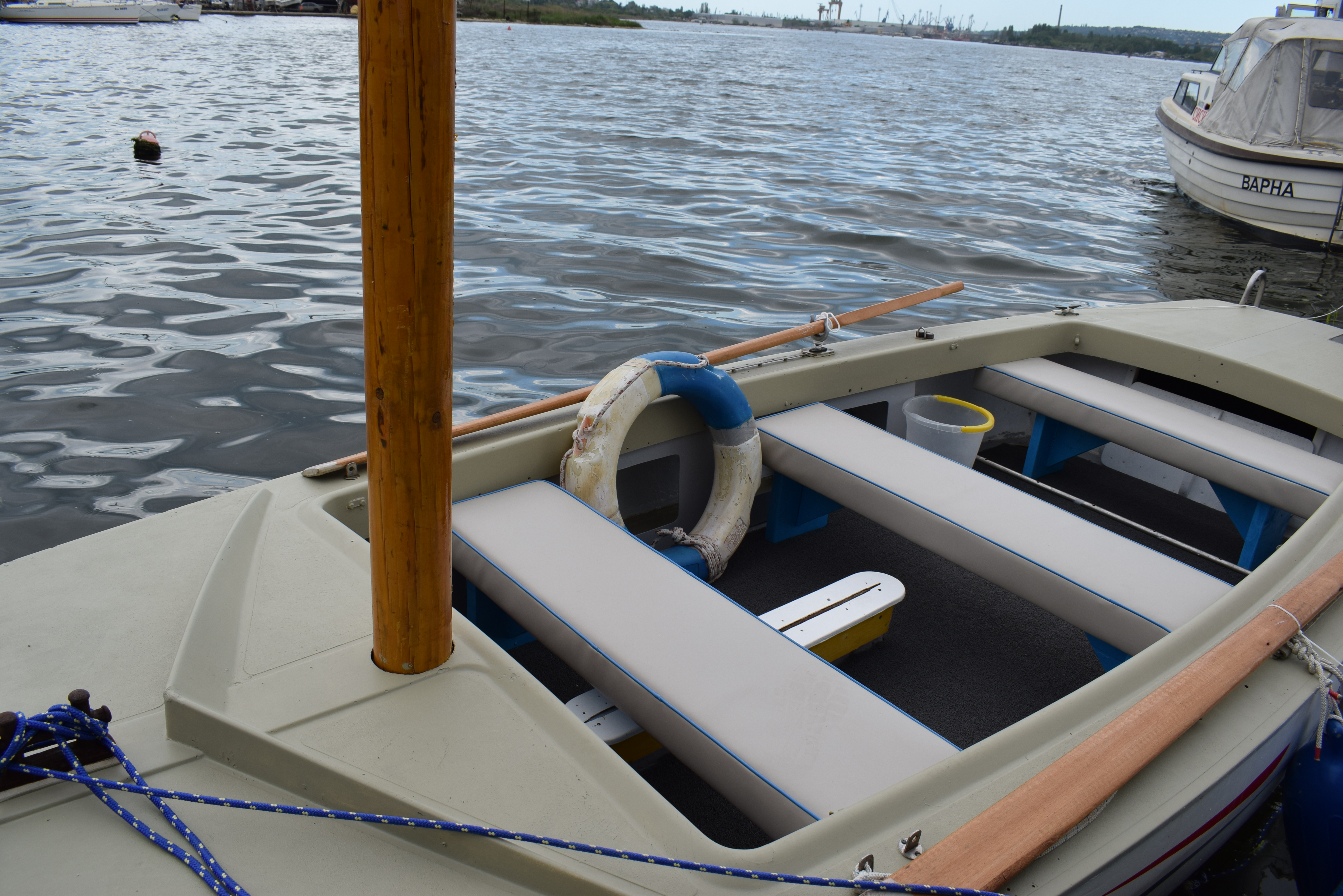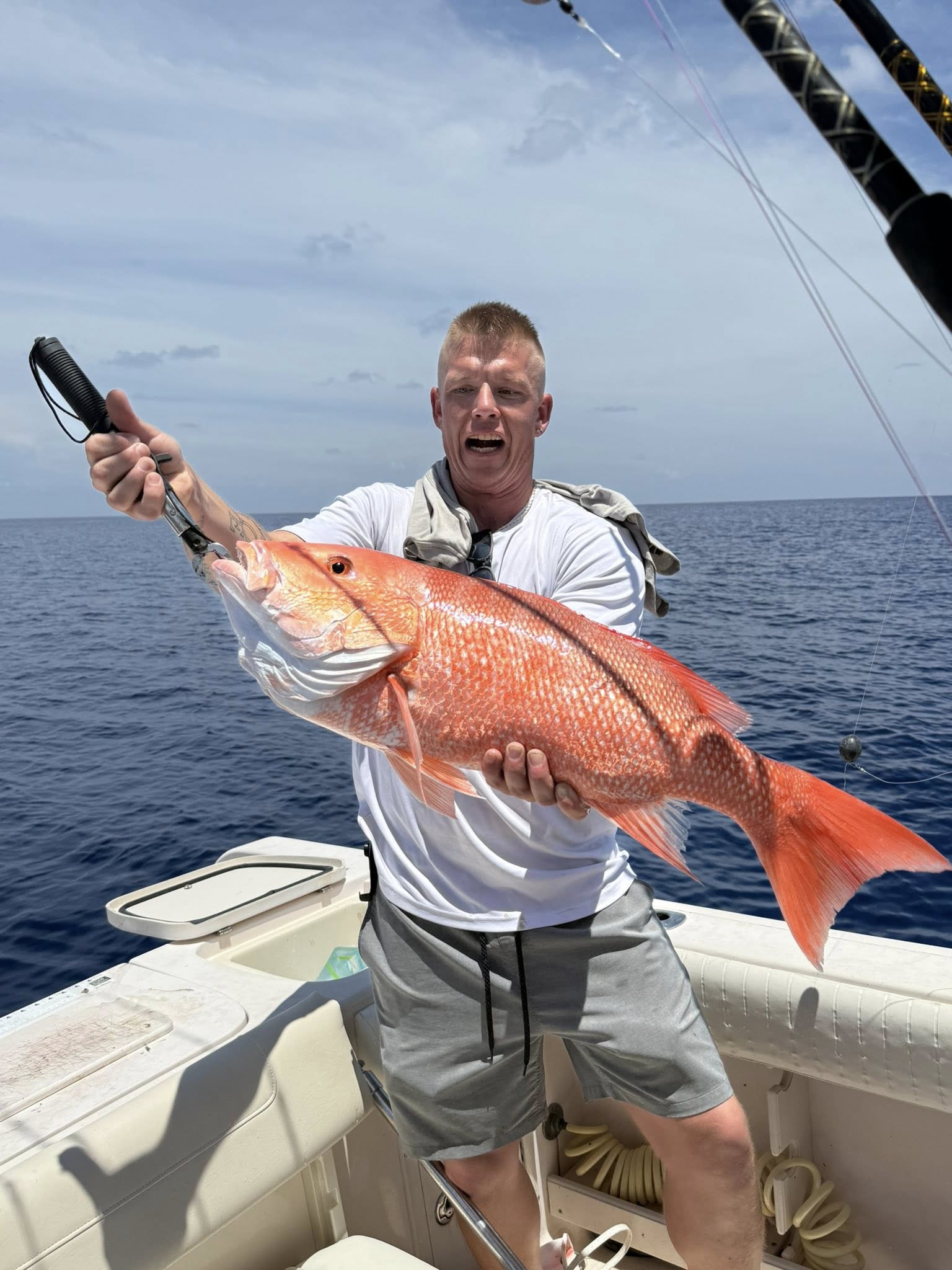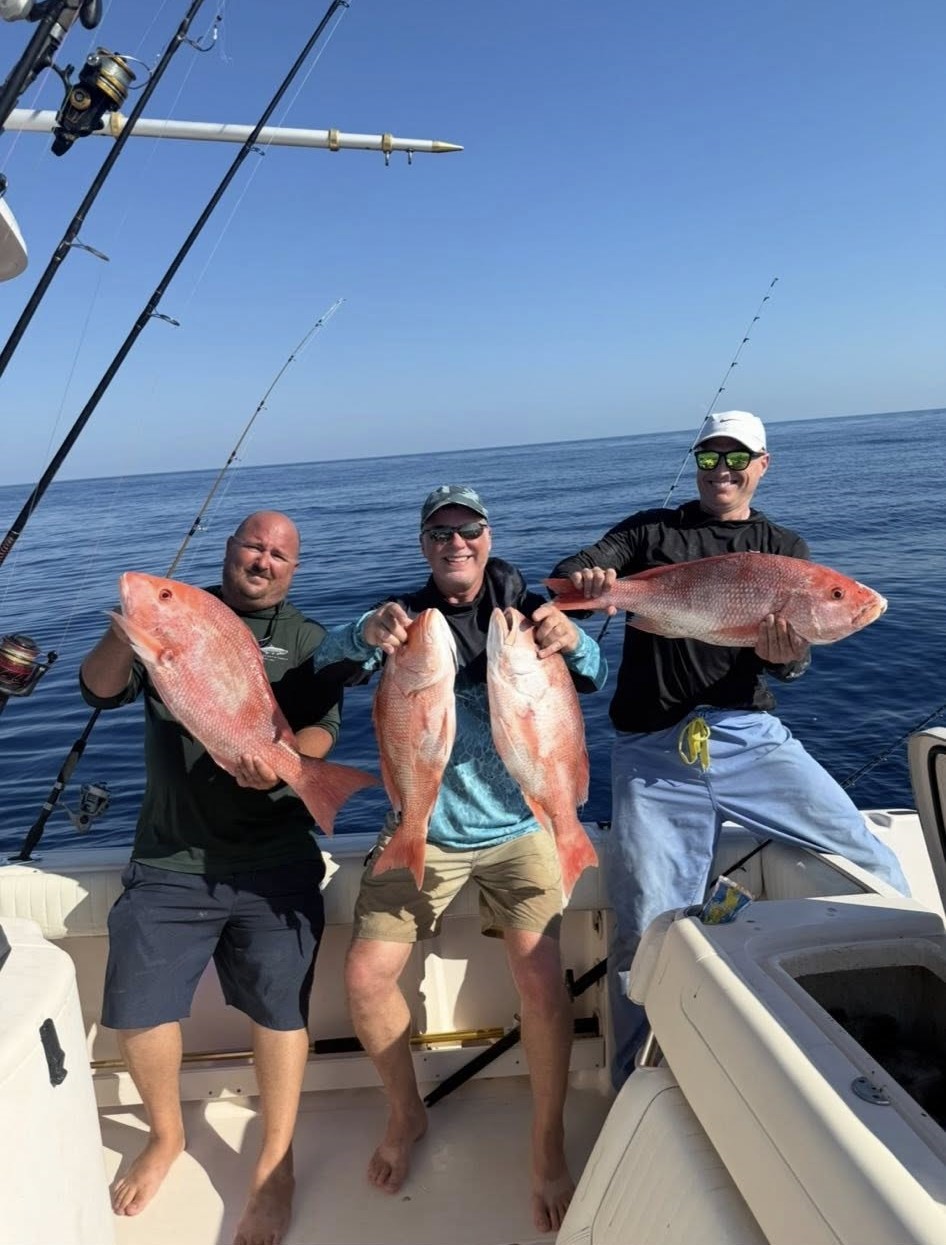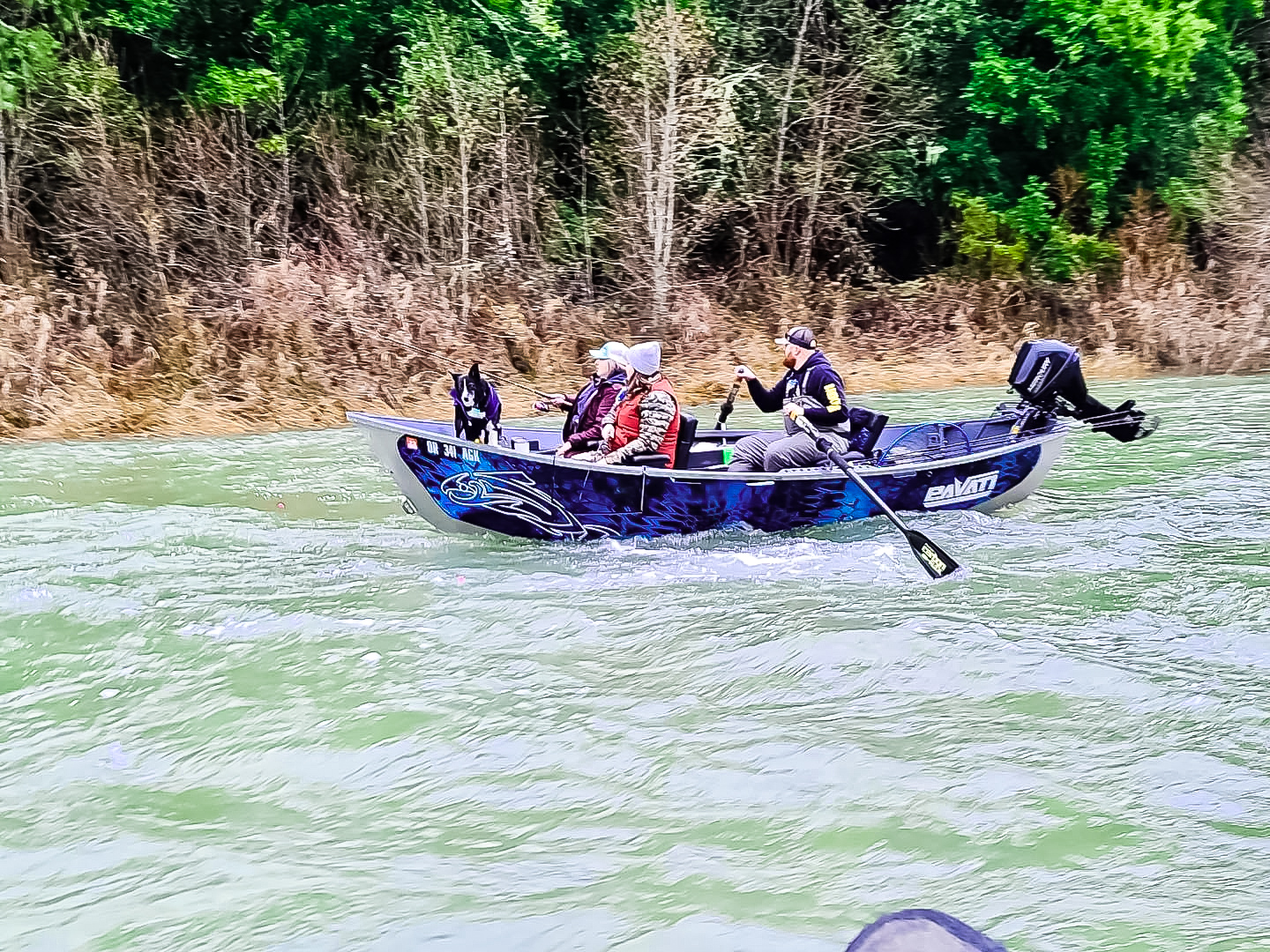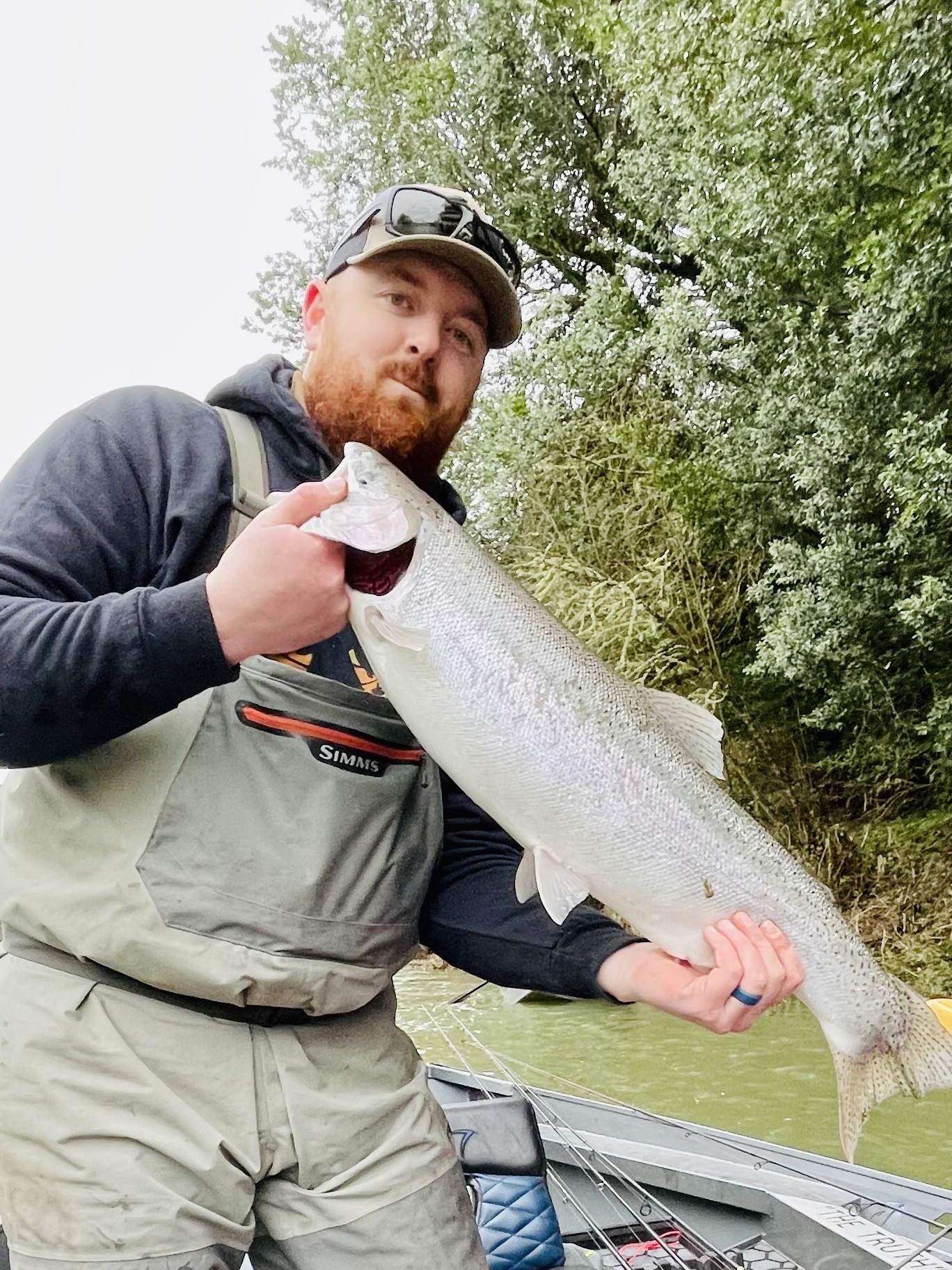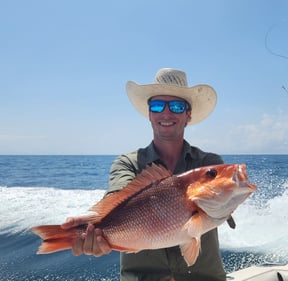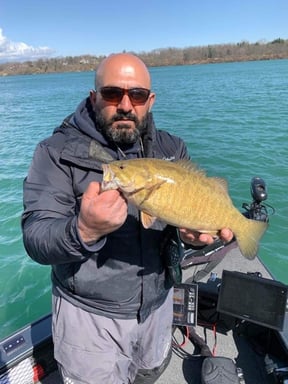Inshore, Flats Fishing in Pineland
Fly Fishing Pineland
Inshore Fishing in Mount Pleasant
Gigging Trip
Salmon Fishing Trip
Steelhead Fishing Trip
Deep Sea, Nearshore Fishing in Puerto Aventuras
Fishing Charter, Puerto Aventuras
Deep Sea, Nearshore Fishing in Islamorada
4 Hour Half Day
Deep Sea, Nearshore Fishing in Islamorada
6 Hour 3/4 Day
Black Sea Trips
Deep Sea, Nearshore Fishing in Sarasota
Red Snapper December Re-Open
Winter Steelhead
We started Captain Experiences to make it easy to book fishing and hunting guides around the world. With over 2,000 Damn Good Guides, our platform makes finding and booking a trip seamless. Head here to check out our trips.
Freshwater Vs. Saltwater Fishing
Salt is the one element that differentiates two entirely different fisheries. Here’s everything you need to know about fishing in saltwater versus fishing in freshwater.
Types of Freshwater Fishing
inland fishing is an umbrella term that covers all types of freshwater fishing. The diverse range of environments, fish species and tackle used for freshwater fishing allows charters to offer an assortment of different trips. The trips range from fly fishing for trout to bottom fishing for catfish or flipping for bass and can be as specific or as general as you want.
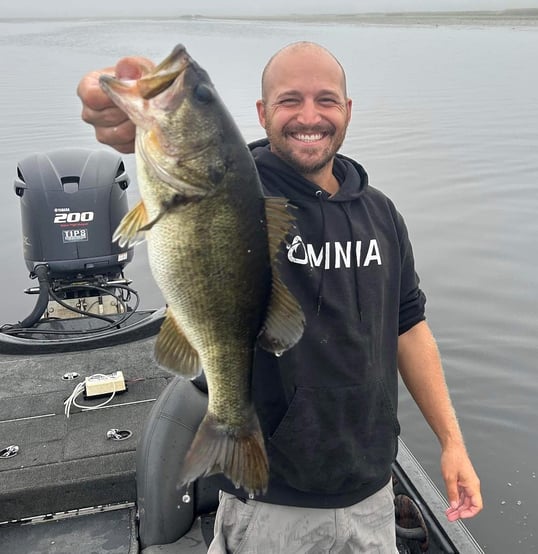
Rivers & Streams
The most common methods for fishing in rivers and streams are bottom fishing, casting light tackle, and fly fishing.
Casting light tackle is a simple and popular technique when fishing rivers. To do this, simply cast your line out into the river and then reel it back in. You can use a variety of different lures when casting, including spinners, spoons, and crankbaits. The key to successful casting is to experiment with different lures until you find one that the fish are biting. When river fishing, it is important to cast upstream of where you want your lure or bait to end up. This allows the current to carry your offering downstream, right into the strike zone of the fish. Another helpful tip is to use a bobber, which will help you keep track of your line in the current and also indicate when a fish has taken the bait.
Fly Fishing
Fly fishing is a technique that uses an artificial fly to catch fish. The fly is cast using a rod, line, and reel, and the angler must use skill and timing to ensure that the fly lands on the water in front of the fish. When done correctly, the fish will strike at the fly and the angler can set the hook.
When it comes to techniques, there are three main types of flies: dry flies, nymph flies, and streamer flies. Dry fly fishing is when you use a floating fly to mimic an insect on the water's surface. Nymph fishing is when you use a weighted fly to imitate an aquatic insect that is emerging or hatching from below the water's surface. Finally streamers mimic minnows, leeches, and other aquatic animals. All three of these techniques can be effective depending on the target species and time of year that you go fishing.
Within these three major categories of flies there are hundreds of different types. Each variation was designed to imitate a different type of food that fish eat.
Lakes & Ponds
The lake's depth is an important factor to consider when fishing, as fish tend to congregate in certain depths depending on the time of year and water temperature. In the summer months, for example, many fish will head to deeper waters to escape the heat. Bass are a popular target for anglers and can be found in depths ranging from a few feet to over 100 feet.
Lures are another important thing to consider when fishing in lakes. While live bait is always an option, lures allow you to cover more water and attract fish with their bright colors and movement. Spoon lures and spinners are two common types of lures that work well in lakes.
Of course, not all lakes are created equal. Different types of lakes offer different fishing opportunities. For example, ponds are typically shallower than lakes and often have an abundance of vegetation which makes them ideal for fly fishing. Reservoirs, on the other hand, are man-made lakes that are often deeper and offer a variety of fish species.
Finally, you can use a few different techniques when fishing in lakes. Still-fishing involves setting your bait up and waiting for fish to find it, while trolling is a method in which you drag lures or live bait behind your boat waiting for fish to hit. Drift fishing is another popular technique that involves casting your line out and letting the wind carry you along as you reel in any fish that bite.
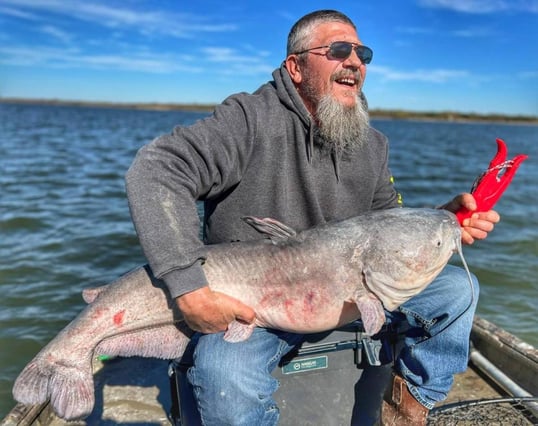
Types of Saltwater Fishing
Trying to decide between the differed types of saltwater fshing is almost impossible because it depends on your preferences and experience level. While there is no objective answer to which one is better, there will be a trip that’s better suited for you. To help you figure out which one is right for you, let's dive in and look at what both of these trips have to offer.
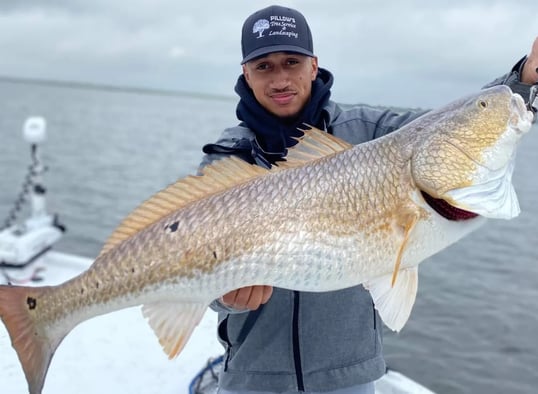
Inshore Fishing
Inshore fishing is a broad category of saltwater fishing that takes place from the backwater estuaries to just beyond the jetties and beaches. Fishing along the coast or in the shallow backwaters offers nonstop action minutes from the dock. The most popular types of inshore fishing include wade, jetty, and flats fishing. Each type of inshore fishing can also be done using different fishing styles with casting, drifting, and bottom fishing being the most popular.
Jetty Fishing
Jetty fishing is one of the most popular and accessible types of saltwater fishing, offering anglers the opportunity to catch a mixed bag of inshore and some nearshore fish species. Jetties are long walls made of concrete and stone that stretch out into the water and are used as a breakwater. They are constructed to protect harbors or prevent erosion along the shoreline. Because of their size and location, jetties create an abundance of habitat for sought after fish to call home.
Jetty fishing is done by anglers targeting fish that use the jetty for cover. Jetties offer ideal habitat for fish to ambush prey, avoid potential threats, or get out of the tidal currents to rest. Anglers targeting jetties typically use spinning gear or conventional tackle with live bait, cut bait, or lures to get a bite.
Wade Fishing
Wading allows you to be immersed in the environment that you’re fishing and become part of it instead of spectating from above. At its core, wade fishing is a style of fishing where anglers stand in the water, stalk fish, and must be self-sufficient. While wading may seem like an inefficient way to hit the water, it’s a great way to target fish that you otherwise couldn’t reach.
Anglers stalk fish and make targeted casts with conventional or fly fishing gear which requires skill and makes success that much more rewarding. Wading is a completely different experience compared to fishing from land or a boat. It allows anglers to be intimately involved with the behavior and environment of the fish they target.
Flats Fishing
Flats are found in coastal inshore waters around the world and give anglers diverse fishing opportunities. Flats are areas in shallow coastal water with a flat bottom that tend to have clear water and scattered vegetation. The sportfish that live here are especially skittish and wary when hunting on the flats because they are more vulnerable in the clear, shallow water.
Shallow water makes the flats sensitive to tides and can drain entirely during low tide, leaving them exposed to the elements. The geography of each area of flats is different and constantly changing, which means the fish change with it. Even as they change, the four features that appear on all flats are vegetation, bars, channels, and shoreline. Flats fishing tackle varies but spinning and fly fishing gear is the most popular.
Nearshore Fishing
Nearshore fishing is a broad category of saltwater fishing that takes place between the waters past the jetties, beaches, and bays and the offshore drop-off. This type of fishing borrows a lot of techniques from both inshore and offshore fishing. The distance from the shore where nearshore fishing takes place is totally dependent on location, but the style of fishing used will generally fall into one of the below categories.
Trolling is commonly used in nearshore waters to target some of the smaller offshore species like kingfish, mahi mahi, and Spanish mackerel. Bottom fishing uses a weight and baited hook to drop your line to reefs, shipwrecks, and other structures. Casting is most popular near rigs or other structures that surface predators like cobia, Spanish mackerel, kingfish, and sometimes mahi mahi prefer.
Nearshore Fishing is a great balance between huge fish and less travel. These trips tend to have calm seas and hard fighting fish, which is perfect for anglers of all levels. Nearshore fishing takes place in the waters past the jetties, beaches, and bays out to the offshore drop off. The most common fishing styles for nearshore trips are trolling, bottom fishing, and casting, which is the most active of the three.
Offshore Fishing
Offshore fishing is a popular category of fishing that happens miles from shore, while chasing the biggest sportfish in the world. This category of saltwater fishing takes place in deep water (hence why it’s often called deep sea fishing) and provides anglers with unmatched action. Typically, boats have to travel miles away from shore to reach the deep water where giant fish roam.
In some locations, however, like Hawaii or Cabo San Lucas, Mexico, the water drops off immediately, making for a good option for those looking for a deep sea experience who may not have time for a full day on the water. If you want to know how far from shore these boats travel to reach deep water.
Within the category of offshore fishing, there are various subcategories, including different fishing styles and target species. The most common types of offshore fishing trips are trolling, drifting, and bottom fishing.
Offshore Fishing: What You Need to Know
Offshore fishing is a popular category of fishing enjoyed by anglers around the world. The action on an offshore fishing charter is unmatched, with the biggest sportfish in the world being caught on these trips. Offshore fishing is a category of saltwater fishing that takes place in deep water (hence why it’s often called deep sea fishing). Typically, boats have to travel miles away from shore to reach the deep water where giant fish roam. In some locations, however, like Hawaii or Cabo San Lucas, Mexico, the water drops off immediately, making for a good option for those looking for a deep sea experience who may not have time for a full day on the water. If you want to know how far from shore these boats travel to reach deep water, check out “How Far Offshore are the Big Fish?”, which takes a deep dive into that topic.
Within the category of offshore fishing, there are various subcategories, including different fishing styles and target species. In addition to location, these factors must be considered when choosing your trip, as they directly influence the distance needed to travel to hit prime spots, impacting the length of your trip.
How to Catch Fish Offshore
While offshore or deep sea fishing can look very different depending on the trip, trolling is usually the first thing people think of. Trolling is done by setting out several baited lines at different distances, which are slowly pulled through the water by the boat. While trolling, the boat drives near underwater structures, ledges, or anything that may hold fish. With the bait dragging behind the boat, once a fish bites, the hook is set immediately. Fish commonly targeted while trolling—including marlin, tuna, wahoo, mahi mahi, and more—are capable of swimming at speeds of up to 50 mph, so trolling at 6 mph is not a problem.
Bottom fishing is another type of offshore fishing, and can sometimes be done in nearshore waters. Bottom fishing uses weighted lines with jigs, live bait, or cut bait that are dropped down to deep structures like reefs and shipwrecks. Because they have shorter travel times, calm seas, and delicious fish, this type of trip is among the most popular. The fish usually targeted by bottom fishing include red snapper, grouper, and amberjack, all of which are stout fighters.
The third major type of offshore fishing is Drift fishing, a popular approach for anglers chasing huge fish in the Atlantic. This type of fishing can be done a few different ways, but it generally consists of using baited hooks that are either weighted and sunk to the bottom or suspended near the surface with a float. Once the lines are set out, the wind and current make the boat drift across the water while slowly dragging the bait. Depending on the setup, drift fishing can be used to target everything from tuna to kingfish.
Joey Butrus
Updated on August 2, 2023

March 8, 2022

May 13, 2024

October 26, 2020

January 7, 2022
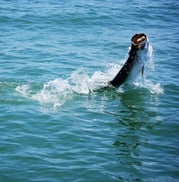
April 15, 2022
Related Articles
September 1, 2022
August 1, 2022
Featured Locations
- Fishing Charters Near Me
- Austin Fishing Guides
- Biloxi Fishing Charters
- Bradenton Fishing Charters
- Cabo San Lucas Fishing Charters
- Cancun Fishing Charters
- Cape Coral Fishing Charters
- Charleston Fishing Charters
- Clearwater Fishing Charters
- Corpus Christi Fishing Charters
- Crystal River Fishing Charters
- Dauphin Island Fishing Charters
- Daytona Beach Fishing Charters
- Destin Fishing Charters
- Fort Lauderdale Fishing Charters
- Fort Myers Fishing Charters
- Fort Walton Beach Fishing Charters
- Galveston Fishing Charters
- Gulf Shores Fishing Charters
- Hatteras Fishing Charters
- Hilton Head Fishing Charters
- Islamorada Fishing Charters
- Jacksonville Fishing Charters
- Jupiter Fishing Charters
- Key Largo Fishing Charters
- Key West Fishing Charters
- Kona Fishing Charters
- Lakeside Marblehead Fishing Charters
- Marathon Fishing Charters
- Marco Island Fishing Charters
- Miami Fishing Charters
- Montauk Fishing Charters
- Morehead City Fishing Charters
- Naples Fishing Charters
- New Orleans Fishing Charters
- New Smyrna Beach Fishing Charters
- Ocean City Fishing Charters
- Orange Beach Fishing Charters
- Panama City Beach Fishing Charters
- Pensacola Fishing Charters
- Pompano Beach Fishing Charters
- Port Aransas Fishing Charters
- Port Orange Fishing Charters
- Rockport Fishing Charters
- San Diego Fishing Charters
- San Juan Fishing Charters
- Sarasota Fishing Charters
- South Padre Island Fishing Charters
- St. Augustine Fishing Charters
- St. Petersburg Fishing Charters
- Tampa Fishing Charters
- Tarpon Springs Fishing Charters
- Venice Fishing Charters
- Virginia Beach Fishing Charters
- West Palm Beach Fishing Charters
- Wilmington Fishing Charters
- Wrightsville Beach Fishing Charters


